Catalogue > Search
Results for : Tout le catalogue
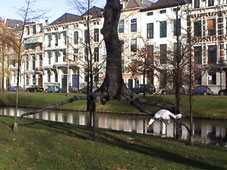

Ruth Baettig
Running by numbers
Experimental video | dv | color | 8:30 | Switzerland, Netherlands | 2005
A person dressed in white runs breathlessly around in Rotterdam. She scrambles up sculptures by well known artists that are staged all over the city and bring to mind a fitness course.
Ruth Baettig was born in Mauensee/Lucerne, Switzerland, in 1964. She splits her time living and working in both Paris and Lucerne. From 1992-1996 she was registered in the Médias Mictes workshops at "l?école supérieure d?arts visuels" in Geneva. In 1999 she obtained a post-graduate degree from the Kunsthochschule in Cologne before registering in the Research Program of Ensba in Paris in 2000. Since 1995 she has participated in numerous video and plastic art exhibitions in Germany, Switzerland, Belgium, France, Brazil, Lebanon, and Armenia. She just recently published "Vagabonde", which can be found in art libraries in Paris.
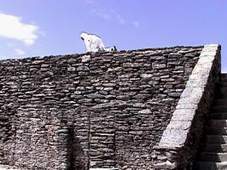

Ruth Baettig
Sunday-Walk
Art vidéo | dv | color | 5:5 | Switzerland | 2005
A white person walks, stands poised, roams around, slips, jumps, climbs, and runs wild and aimlessly along the sculptures of the Alps in ruins. Out there, she passes casual hikers and other week-end tourists. Upset and baffled, the viewer sees the white person walk away. The video was shot in the Swiss mountains across the Italian border. The various components, including a mountain vista, an art figure, and movements, set up a comically absurd picture.
Born April 7th, 1964, 1992-96 Ecole Supérieure d'Art Visuel, Atelier Medias-Mixtes Silvie & Cherif Defraoui, Genf, Switzerland 1997-2000 Postgraduate studies at the Kunsthochschule fur Medien" in Cologne, Germany 2000-2002 Research Program, Ecole Nationale des Beaux-Arts, Paris, France
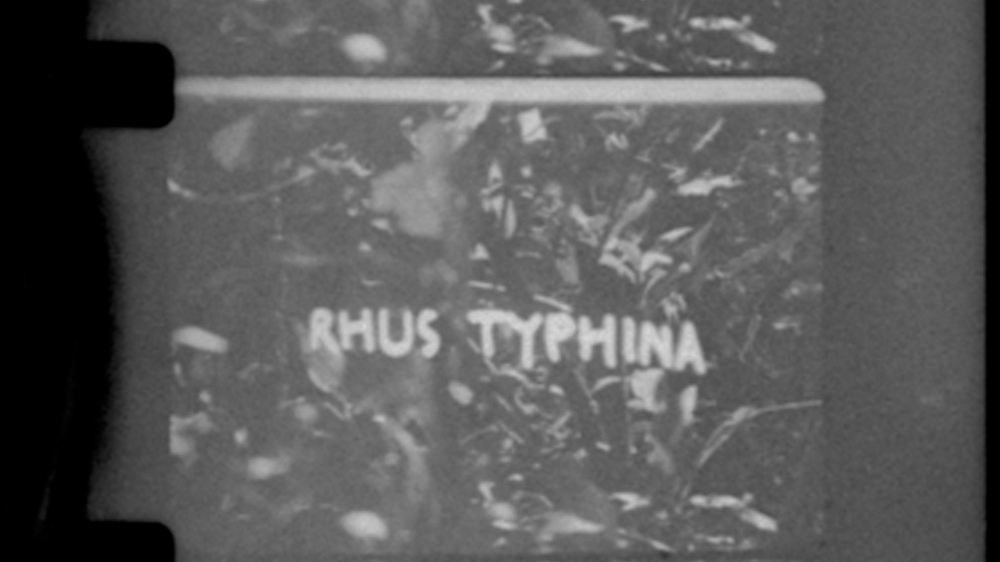
Georgy Bagdasarov, Alexandra Moralesova
Rhus Typhina
Experimental film | 16mm | black and white | 2:44 | Armenia, Czech Republic | 2014
One of the series of labodoble experiment of the natural(organic) film developers. The structure of the film is based on the chemical formula of the Rhus Typhina`s developer. The main protagonist of the film is a species of flowering plant in the family Anacardiaceae which leaves and berries have been mixed with tobacco and other herbs and smoked by Native American tribes. We tried to apply the properties of the Rhus Typhina in the photochemistry. The film catches the research, experiments, harvesting and preparation of the film developer in which latter original negative was developed. The nonlinear structure of the chemical formula as well as nonlinear research of the process reflected in a order of the frames. There is no post-production except sound all editing work is made while film was loaded in camera before chemical development.
Alexandra Moralesová was born in 1989 to Czech mother and Argentinian father. She studied at the Centre of Audiovisual Studies at The Film faculty of the Academy of Performing Arts in Prague (FAMU). Beyond the inspiration by the practices of experimental film, she`s mainly interested in remediation of found footage and found objects. Through various ways of viewing it, those objects represent for her its own possibility of de/construction in order to cross the frontier between analog and digital media and so disrupt the spectacle and alternate existing narratives. It`s been several years that she explores the post-production tools as for example the editing table or film viewers. The output of her works is often a performance, film screening or installation. Georgy Bagdasarov was born in Armenian family in 1978 to the sounds of rockets taking off into space from Kazakhstan. He never boarded any of those rockets and spent all his life living in various locations throughout Eurasia. Now he lives and works in Prague. His work explores the space between analog and digital, and merges them together. His works are created under strong influence of structural films, cooking recipes and syntax of computer codes. He combines different media: digital and film stock as well as music and food.
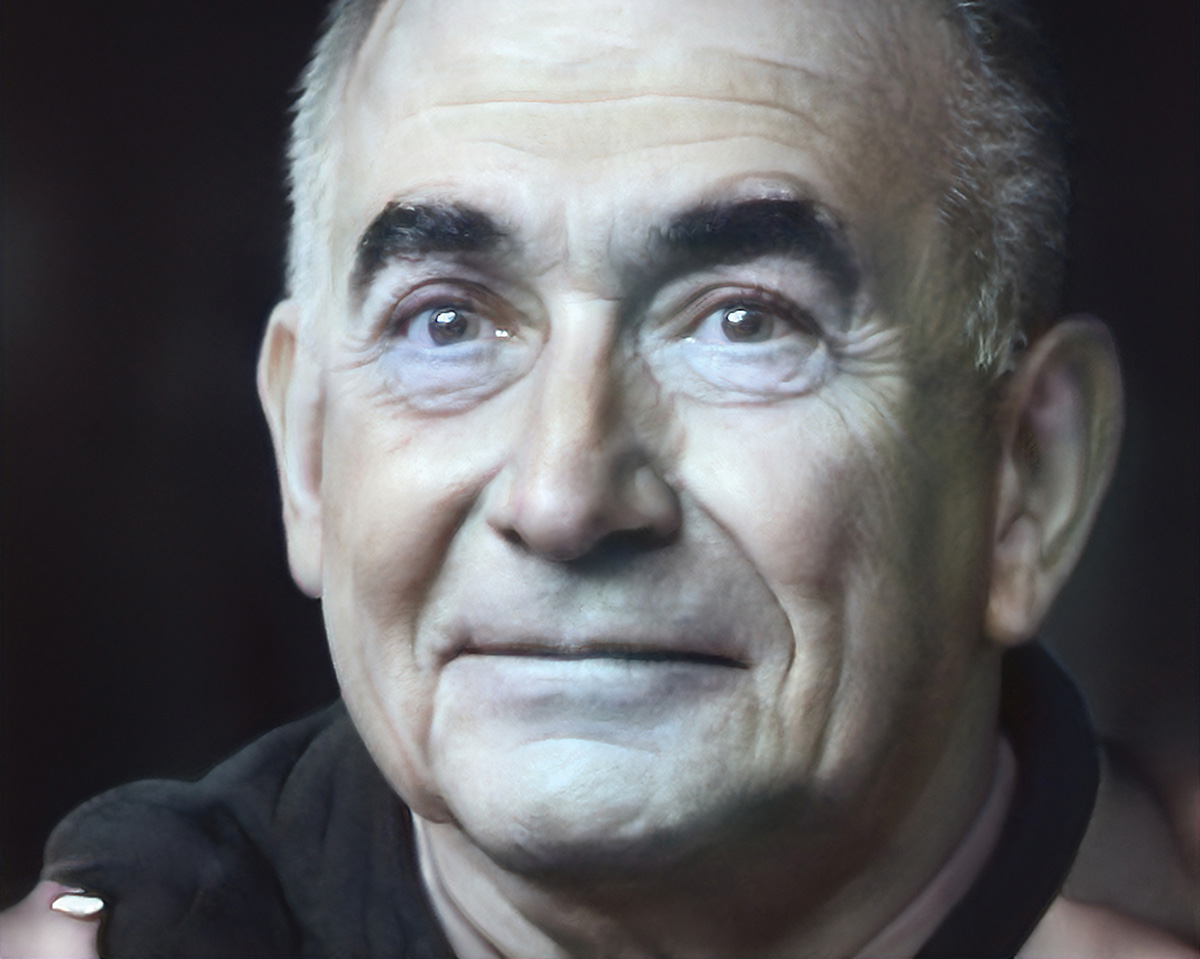

Georgy Bagdasarov, Alexandra Morales
Pro(s)thetic Dialogues
Experimental doc. | mp4 | color | 21:39 | Armenia, Czech Republic | 2022
Pro(s)thetic dialogues is more like a recording of a theatre performance playing out on a computer desktop. Here the human operator creates the conditions for exploring the performativity of a philosophical zombie pieced together from neural networks. The operator/stage technician merely directs the flow of mathematical operations pretending thought and creates a space in which the philosophical discourses are dissolved
Since 2013 Alexandra Moralesova and Georgy Bagdasarov form a filming and experimenting duo Labodoble. We run an artistic and curatorial platform under the same name. We mainly focus on photo-chemical experimental film processes but we are interested in other kinds of media practices. We like to question media and to reshape the relation of machine-operator into machine-performer. We merge technical skills with media theory and philosophy. We do films, performances, installations and workshops.
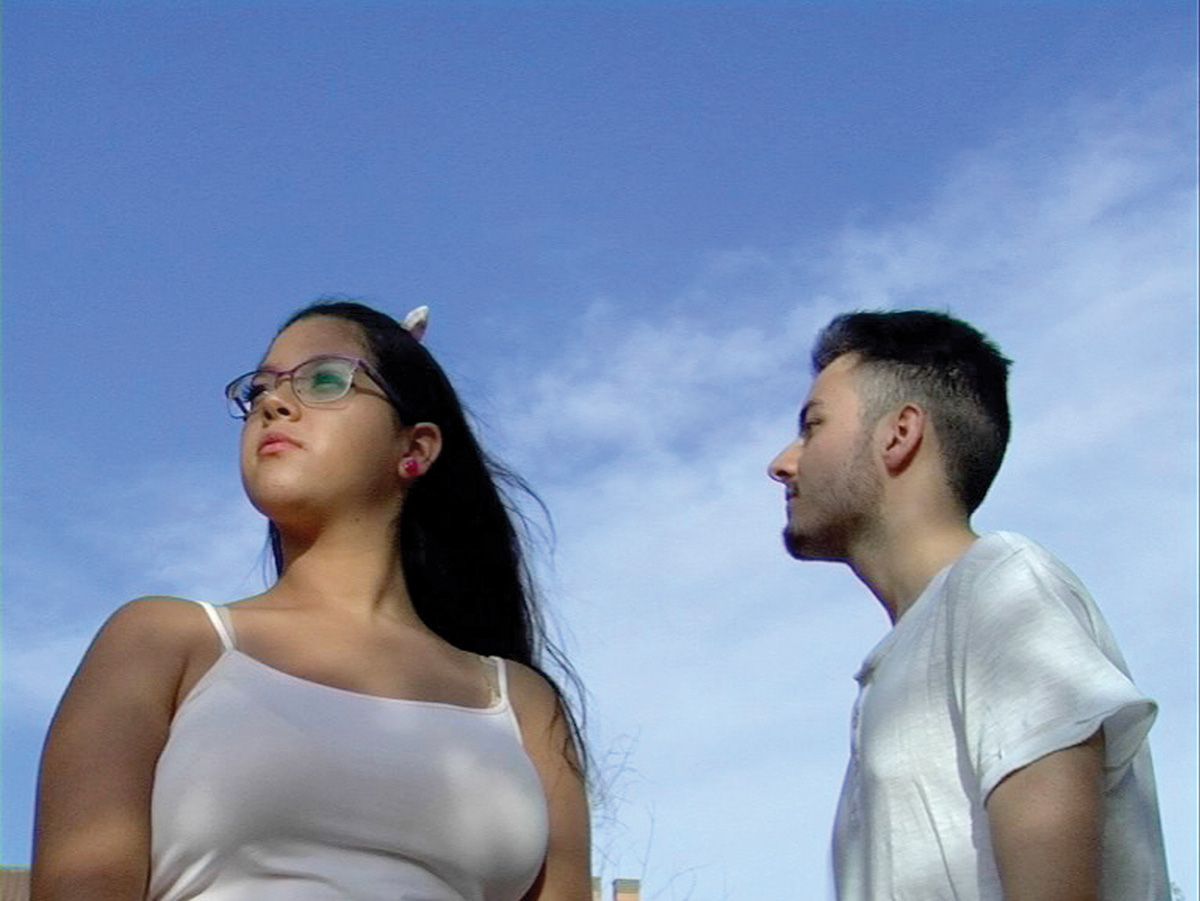

Christian Bagnat, Elvira Sánchez Poxon
Tembiapo Pyharegua
Experimental doc. | hdv | color and b&w | 120:0 | Argentina, Spain | 2022
Tembiapo Pyharegua (Night Work) is a cinematographic chronicle that follows the life of a Paraguayan Guarani-speaking community that settled in Cuenca, Spain. The title refers to those nights where the impossible is dreamed and lived, that time of life between working hours. That is where we stop and observe how they recover their time. And how they spend their leisure hours. During those nights they name the things they are willing to do when they return to their country. Desires, dreams, future projects: every day they say them out loud, as if it were a spell. A record of this future is slowly being made, night by night.
Christian Bagnat. Argentina 1971. Studied Art and later Film. Night Work, first feature film co-directed with Elvira Sánchez Poxon. It’s filmed in Cuenca over seven years, using a particular method of work that reflects on the changes and events that occur in a small town. He works creating a film archive about the Latin diaspora in Spain. Elvira Sánchez Poxon Madrid 1977. She studied Fine Arts at the UCM and developed works in the field of painting and experimental sound stories. In the meantime, she studied film, collaborating regularly with Christian Bagnat. They co-directed the short film Pablo and Night Work is their first feature film.
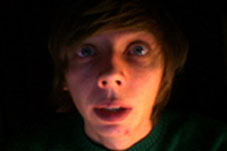

Jeremy Bailey
Full Effect
Experimental video | dv | color | 2:0 | USA, Canada | 2005
Cheap effects cannot make a melodramatic performer feel any better.
Jeremy Bailey is currently pursuing his MFA in Video Art at Syracuse University in Syracuse NY. His work is often technologically grounded and fundamentally concerned with authorship and authenticity. He is also video programmer for SPARKVIDEO, a successful video series at Spark Contemporary Art Space in Syracuse.

Nicolas Bailleul
Boolean Vivarium
Experimental doc. | hdv | color | 0:0 | France | 2023
In a house isolated from the rest of the world, Léo and Nicolas are busy creating Vivarium, a video game in which we witness the rotting of an uninhabited house. A game that strangely echoes the place where the protagonists struggle to cohabit.
Born in Paris in 1991, Nicolas Bailleul is a plastic artist and researcher, with a diploma from the Haute École des Arts du Rhin (Strasbourg) and a master's degree in anthropological and documentary cinema (Université Paris-Nanterre). Through his films and other narrative devices, Nicolas Bailleul explores the terrain of the interior in the age of connected networks. In particular, he is interested in new amateur practices (designated or claimed as such), using and diverting their captat ion tools and invest iting/infiltering their spaces of dissemination and encounter. Nicolas documents, fict ionnalizes and narrates his explorat ions. Since October 2020, he has been a doctoral student in research-creation at Université Paris 8 under the direction of Patrick Nardin and the co-direction of Gwenola Wagon.


Daria Baiocchi
Plasma
Création sonore | hdv | color | 7:0 | Italy | 2016
The creative idea for this piece comes from the word “ Plasma ” that is often called the "Fourth State of Matter". Plasma is a distinct state of matter containing a significant number of electrically charged particles, a number sufficient to affect its electrical properties and behavior. Plasma also refers to the liquid component of blood that holds the blood cells in suspension. Energy, thunder and blood inspired my composition process. I started by recording some sounds with a new percussion instrument, called “ Sinori ”, a thunder-sheet, that have been processed with these images in my mind.
DARIA studied piano, classical composition and electronic music. Her compositions have been played in theaters and concert halls throughout the World and broadcast by several Radio stations (Holland National radio, France,Portugal, UK, USA etc). She also owns a degree in “Classical Literature” from the University of Bologna (Italy).
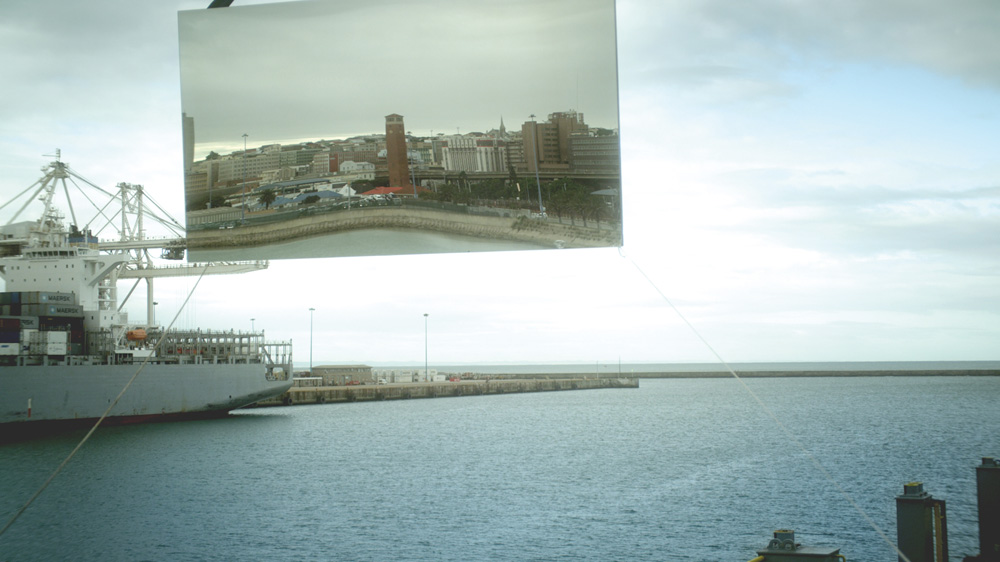
Bridget Ann Baker
Jetty SCOUR
Video | hdv | color | 20:53 | South Africa | 2014
Jetty SCOUR, suggests the physical markings left behind from a ships arrival and departure. Here is the present day ‘arrival’ of the “human-transporter”, a replicated 19th century cane-woven basket or ‘lift’ to a harbour in South Africa. The original would have been used off the coast of Algoa Bay in South Africa from 1890-1920 to lift colonial settlers to and from ships at sea before the development of harbours. Here the artist works with the object as historical witness, to engage with contested sites and legacies linked to the arrival of her own ancestors, a British settler family, to that same bay in 1820. The film, whilst documenting a contemporary working harbour within the economy of international trade, marks this space and place with historical encryptions, the smallest tensions, that refuse a “blanking out” of history.
Bridget Baker lives and works in London and Cape Town (b.1971, East London, South Africa). Her work is situated at the intersection of documentary and myth creation, forming a series of complex visual fragments realised through filmmaking, installation and performed re-stagings. Baker’s practise and visual language, whilst based on in-depth research into personal and public modes of representation within colonial and postcolonial narratives remains characteristically speculative, nomadic and estranging. Occupying the realm of the imaginary, the characters in her films, installations and photographs are spliced into roles as presences / witnesses / mirrors that enact lost memory within those peripheral places blind spotted by “official” history making.
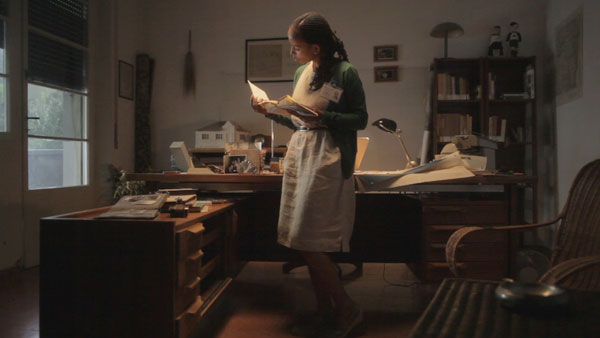
Bridget Ann Baker
The Remains of the Father
Experimental video | hdv | color | 24:0 | South Africa, Italy | 2012
The Remains of the Father: Fragments of a Trilogy (Transhumance) is an experimental film and installation. It considers marginally remembered Italian colonial history in Eritrea and Ethiopia between 1930 and 1941. An Eritrean researcher Lula Teclehaimanot discovers an archive of non-official ethnographic literature collected by a Bolognese couple Giovanni Ellero and Maria Pia Pezzoli who had worked for the ?Ministry of Italian Africa? in Eritrea and Ethiopia during that period. Lula has been tasked by the municipality of Asmara to translate from Amharic into Tigryna: A contribution to the birth of the colonial style, an unpublished manuscript written by Ellero promoting the rationale of a modernist Ethiopian architectural vernacular. While she works Lula listens to a radio interview conducted in Italian, Tigryna and Amharic about the contemporary relevance of proverbs in Eritrean and Ethiopian societies. Set within a single room of a derelict house in Bologna which had been built for retired fascist army officials, is also the imagined office of Ellero. Many of the documents laying about the office; Eritrean and Ethiopian proverbs, hand drawn maps, and family emblems and curiously amongst these are the traces of her own family history, collated by Ellero before she was born.
Bridget Baker is an artist from South Africa. She is based in London and Cape Town. Baker?s work is situated at the intersection of documentary and myth creation, forming a series of complex visual fragments realized through film making, installation and documented re-stagings. Baker`s practice and visual language, while based on in-depth research, is often speculative and nomadic, seldom offering a finite position on events or histories. Her work has been exhibited extensively but also at The Museum of African Art (NYC), MAMbo (Bologna, Italy) Centro des Artes Contemporanea (Burgos, Spain), Palazzo delle Papesse (Siena, Italy), Neue Berliner Kunstverein (Berlin), the 2nd Johannesburg Biennale (Cape Town), Bow Arts Centre (London), Glasgow Film Festival (Scotland), Dak?art 2012 (Senegal), Wapping Project (London), South African National Gallery (Cape Town), the South Africa National Arts Festival (Grahamstown, South Africa), and the Oberhausen Short Film Festival (Germany).

Pariya Bakhshi, Blanca Barbat
Velodrome
Experimental film | 16mm | color | 6:0 | Iran, Germany | 2023
A surreal take on two people longing to bond through movement. The setting is a bygone velodrome, the Albert Richter track in Cologne. Without words, VELODROME evokes a poetic and eerie liminal space. It portrays a pursuit of communication, a permanent interruption. A moment of encounter without meeting.
Pariya Bakhshi, (they/she) born 1997 in Hiroshima, is an Iranian filmmaker and artist. Pariya lives in Germany and has been studying film at the 2019 studying film at the Academy of Media Arts Cologne. She grew up in Iran, Tehran and studied design at the Tehran University of Fine Arts. One of her main themes is freedom and exile, which she explores in her autobiographical essay film Displaced in Time. For her, the act of making art and film becomes political, among other things by breaking conventions and media boundaries. In her feature films, she translates the unspoken from our reality into a surreal film world, through the expression of the body, beyond language. Pariya therefore works mainly with dancers, as in Katzenbellen, L , VELODROME and ANAMORPHOSIS. Blanca Barbat : I am a multidisciplinary artist. My creative praxis can take the form of films, installations, drawings, performances, and more. I'm particularly intrigued by the concept of 'bodies,' often exploring their boundaries, especially their thresholds, and their role in the ever-evolving narrative of our transforming reality. I perceive myself as both an expression of the world and a spectator within it. I connect with concepts like the rhizome and the collective unconscious.


Mieke Bal
Nothing is Missing
Experimental doc. | dv | color | 35:0 | Netherlands, Turkey | 2006
Visitors are invited to sit in armchairs or on sofas while around them women speak to someone else. The interlocutors are people close to them, intimates, but the relationships with them have been interrupted due to the migration of the women's children: a grand-child one didn't see grow up; a child-in-law one chose not to approve of; an emigrated child; in one case, three generations. The intimacy, but sometimes a slight uneasiness, is characteristic of the situation. Sometimes you hear the other voice, sometimes not. Intimacy in the film is enhanced not only by the subject discussed ? the departure of the child who left for Western Europe ? but also because the mothers talk to someone close to them. Moreover, the filmmaker sets the shot, switches the camera on, and leaves the room, only to return after the allotted time. This abandoning of authority and leaving what happens to chance, and the interaction between the two people, makes the filming highly performative. Things happen between the speaking parties, due to the filming but not due to directions from the filmmaker. This performative aspect enhances the value of the process, some of which is also at issue during viewing.
Mieke Bal, cultural critic and theorist, holds the position of Royal Dutch Academy of Sciences Professor (KNAW). She is also Professor of Theory of Literature and a founding director of the Amsterdam School for Cultural Analysis, Theory and Interpretation (ASCA) at the University of Amsterdam. Her areas of interest include literary theory, semiotics, visual art, cultural studies, postcolonial theory, feminist theory, French, the Hebrew Bible, the seventeenth century, and contemporary culture. She is also a video-artist. Her many books include A Mieke Bal Reader, Chicago: University of Chicago Press, 2006; Travelling Concepts in the Humanities: A Rough Guide, Toronto: University of Toronto Press 2002; Louise Bourgeois? Spider: The Architecture of Art-writing. Chicago: University of Chicago Press 2001; Quoting Caravaggio: Contemporary Art, Preposterous History, Chicago: University of Chicago Press 1999; and Reading Rembrandt: Beyond the Word-Image Opposition, New York and Cambridge: Cambridge University Press 1991. A Mieke Bal Reader just appeared with Chicago University Press. Her video installation "Nothing is Missing" is currently touring internationally.
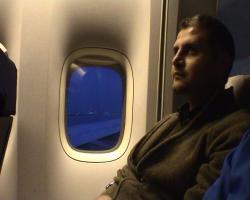

Mieke Bal
Access Denied
Experimental doc. | betaSP | color | 30:0 | Netherlands | 2004
Ihab (31), a Palestinian academic living in Amsterdam, is preparing to travel to visit his family in Gaza for the first time in four years, and do some fieldwork. Gary (28), an Irish artist also living in Amsterdam, intends to accompany Ihab and film the reunion with his family, the interviews with informants, and the progress of Ihab?s project: to study the cultural memory in Palestine of al nakba, the catastrophe of 1948. While they prepare for the trip, Ihab and Gary become closer. But, once they arrive in Cairo airport, Ihab?s arrest and deportation separates the two. From here on, the film alternates vistas of the two men?s trip. While Ihab conducts his research with determination and commitment, Gary is flooded by his first encounter with Arabic culture. He turns around in circles, having nothing to do but wait until he can fly back to Amsterdam. Ihab, in contrast, works frantically, but cannot leave on the planned date, since Israel has closed the borders. This film uses the metaphors of travel and failed encounters for a meditative reflection on the intercultural encounter between Arabic and Western individuals eager, but not always able, to understand each other.
Mieke Bal, cultural critic and theorist, holds the position of Royal Dutch Academy of Sciences Professor (KNAW). She is also Professor of Theory of Literature and a founding director of the Amsterdam School for Cultural Analysis, Theory and Interpretation (ASCA) at the University of Amsterdam. Her areas of interest include literary theory, semiotics, visual art, cultural studies, postcolonial theory, feminist theory, French, the Hebrew Bible, the seventeenth century and contemporary culture. She is also a video-artist. Her many books include Travelling Concepts in the Humanities: A Rough Guide, Toronto: University of Toronto Press 2002; Louise Bourgeois? Spider: The Architecture of Art-writing. Chicago: University of Chicago Press 2001; Quoting Caravaggio: Contemporary Art, Preposterous History, Chicago: University of Chicago Press 1999; Reading "Rembrandt": Beyond the Word-Image Opposition, New York and Cambridge: Cambridge University Press 1991. A Mieke Bal Reader is forthcoming with Chicago University Press.
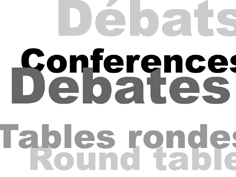

Ruxandra Balaci
National Contemporary Art Museum
0 | 0 | | 0:0 | Romania | 2007
Inaugurated at the end of 2004 in Bucharest, Romania, the MNAC (National Museum of Contemporary Art) occupies 16000 square metres of the E4 wing in the Parliamentary Palace, the second biggest building in the world after the Pentagon. Also known under the nicknames "palace of the people" and "Ceausescu's palace", the Parliamentary Palace is a genuine pornographic projection of power, a megalomaniac erection. A place marked by a totalitarian history, the Palace, after having welcomed the Romanian Parliament and an international conference centre, it now welcomes a space dedicated to the dynamic of ideas and artistic dialogue. The MNAC is an ambitious project, a project trapped by the Romanian situation, unstable and always close to regression. It is a gigantic contemporary art museum, the biggest of Eastern Europe; innovating and avant-garde, it has to succeed in making a link between a "provincial" population, who remains to be educated, and its ambitious programming. The MNAC is the fruit of the obstinacy of the scope of two Romanian personalities: Mihai Oroveanu, the museum's Chief Executive who carried the project for more than ten years, and Ruxandra Balaci, his Scientific and Artistic Director. Today the museum's board of directors is made up of a genuine international dream team where reside Ami Barak, Curator and President of the International Association of Curators of Contemporary Art; Rene Block, Director of the Kassel Kunsthalle Fridericianum; Nicolas Bourriaud, Co-Director of Palais de Tokyo, Paris; Heiner Holtappels, Director of the Netherlands Media Art Institute ? Montevideo/TBA in Amsterdam; Anders Kreuger, Independent Curator and former Director of the Nordic Institute for Contemporary Art in Stockholm; Enrico Lunghi, Director of Casino Luxembourg, Forum d'Art Contemporain in Luxembourg; and Catherine Millet, Director of Artpress. The MNAC is a living, pliable, polemic space, animated by a web of intellectuals in which the East and the West are partners, a lab open to research in the visual field.
Critic and commissioner of the exhibition, Ruxandra Balaci directed the Gallery Gad in Bucharest, Rumania. Today she is co-editor of the review Artelier, and the deputy manager as well as the Artistic and Scientific Director of the Bucharest National Museum of Contemporary Art (MNAC).
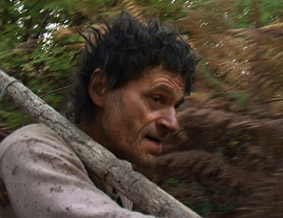

Laurence Balan
Le Plein Pays
Documentary | | color | 58:0 | France | 2009
A man has been living for thirty years as a recluse in a forest in France. Alone, he hews out deep underground tunnels and galleries, which he decorates with old-fashioned engravings. They must withstand the planetary disaster that has been announced, and they must explain things, through their perceptive messages, to future inhabitants. The film recounts this experience as lived on the sidelines of modern society, affected as it is by human wretchedness and the loss, once and for all, of a perfect world.
Antoine Boutet works in Montreuil, France. Artist and filmmaker, his recent films include documentary "ZONE OF INITIAL DILUTION (2006) and CONSERVATION_CONVERSATION (2005), experimental films UTOPIA (2005) and PLUS OU MOINS (2004). In 2010, a documentary film project untitled TAMING THE WATERS will be realized in China. Selected video-installations and site-specific art projects have been recently exhibited in Pratt Manhattan Gallery/ New York, Biennale de Selest`Art/ France, Galerie des Filles-du-Calvaire/ Paris, Kunstraum Walcheturm/ Zürich, Lianzhou International Photo Festival/ Chine, Ateliers des Arques, Musée d`Art Contemporain les Abattoirs/ Toulouse, Festival Estudio Abierto/ Buenos Aires. He will participate in Printemps de Septembre at Toulouse, 2009, with LE PLEIN PAYS.
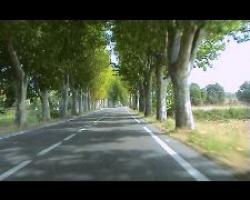

Raphaël Balboni, Daniel Van De Velde
Continuum
Art vidéo | dv | color | 10:0 | France | 2005
A travers la vidéo « Continuum », Raphaël BALBONI cherche a déceler la réalité. Son intention est de ne pas réduire celle-ci à une valeur d?usage, en créant des décalages par des séparations des éléments, des scissions, dans un espace dit naturel. Une route traversant une forêt implique une vide central entre les deux parties de la forêt que cette route traverse. Un vide qui se divise en quatre pour rejoindre l?intérieur de quatre troncs évidés ; eux-même en mouvement. En partant du mouvement des quatre troncs évidés, repartir sur quatre arbres dans quatre forêts où l?on accède par quatre routes différentes. La vidéo ici travaille le regard dans le mouvement continuel, des trajectoires sans commencement ni fin. Ce pour rendre le regard actif. Filmer en prenant comme point d?appui quatre troncs, quatre lunes, quatre routes différentes, pour délocaliser le regard. Un exotisme en mouvement qui ne ramène pas à une unité de lieu, donc de regard mais pousse celui-ci en continuum à l?intérieur de l?univers dont il est parti. L?auteur travaille ici sur la segmentation : les troncs segmentés en bûches évidées, - pour inclure le regard immédiatement dans le monde par des séquences, des interstices et ainsi petit à petit le regard s?éprouve comme immergé, intégré dans un univers dans lequel il circule tout comme le fait la caméra tout au long de la vidéo. Un regard, une ?uvre qui ne se constituent plus à partir du paysage, un regard, une ?uvre où l?horizon est mis a distance. Une regard, une ?uvre où les vitesses de rotation d?une voiture (par les tournants), de rotation du monde (gravitation, cycle lunaires et végétaux), de rotation d?un tronc segmentés en bûches évidées (cycle de croissance propre à l?arbre qui se dessine en spirale, par la double action de la gravitation et de la photosynthèse) sont captées par des images en mouvement. Quelque chose qui opère de façon juste et nécessaire parce que seule à ce jour, la vidéo permet une telle saisie de la réalité en mouvement. En devenir consistant?
Raphaël Balboni est né à Troyes (France) en 1978 et réside actuellement à Bruxelles (Belgique). Il est actuellement étudiant. Il obtient en 1998 une licence en Arts du spectacle et cinéma à Paris. De 2001-2005 il étudie à l?IDA (Institut des Arts et de la Diffusion). En 2002-2003 il suit également des cours à l?Académie Royale des Beaux-arts de Bruxelles. Depuis 2000 il a réalisé et monté nombreuses ?uvres et documentaires, présentés en Europe, par exemple le Centre d?Art Contemporain Passage, le Centre Culturel Canadien à Paris, la galerie Cour Caché à Paris ou encore à l?Institut Supérieur de l?Etude du Langage Plastique à Bruxelles. En 2004 il réalise avec Cécile Masart une vidéo, "Le site de Soulaines-Dhuys", sur le site de traitements de déchets nucléaires de l?ANDRA. En 2004 Raphaël Balboni réalise avec Anne Herbaut un film d?animation en 16mm, "Et Jean s?est perdu dans ses pensées".
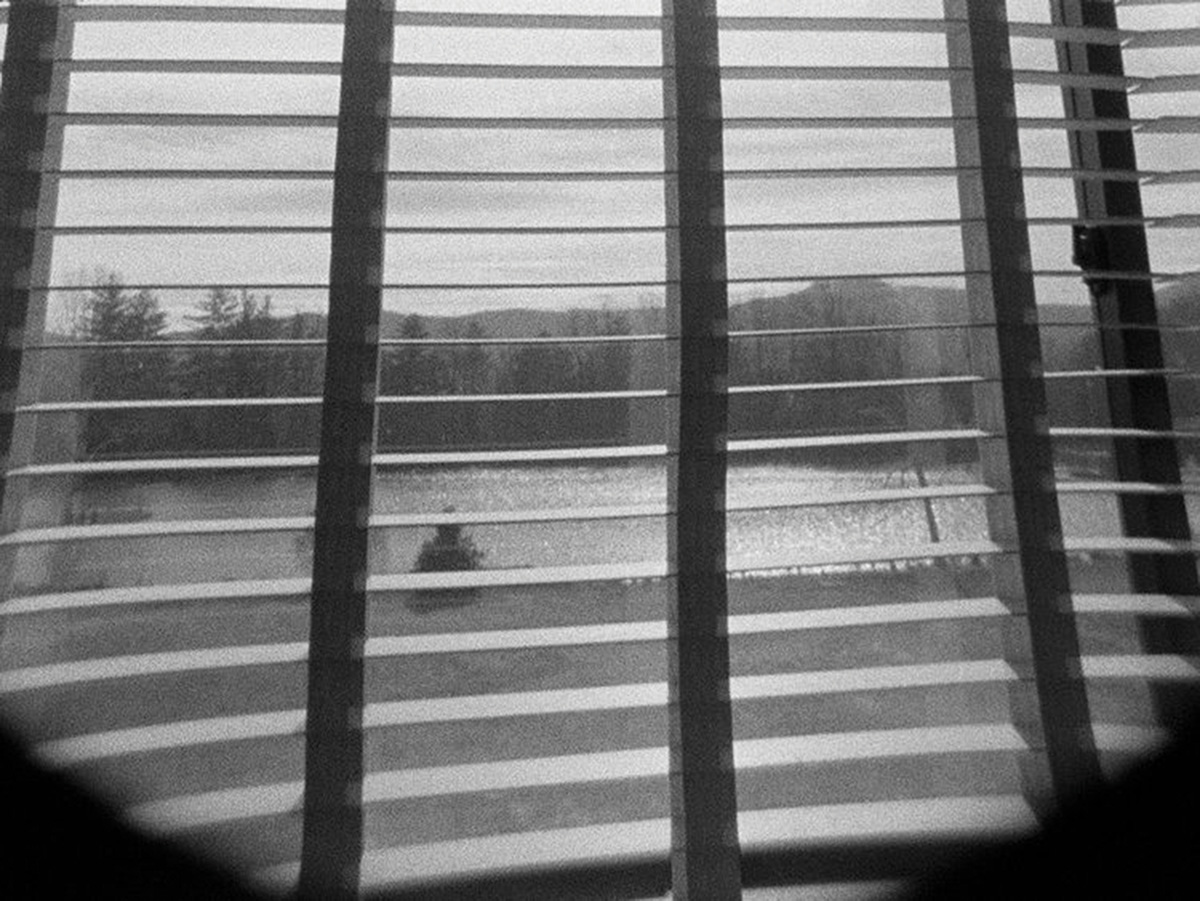

Ben Balcom
Looking Backward
Experimental doc. | 16mm | color and b&w | 10:0 | USA | 2022
Filmed on the former grounds of Black Mountain College, Looking Backward is a brief elegy to the legacy of a utopian college and other impossible projects.
Ben Balcom is a filmmaker and educator currently living and working in Milwaukee, Wisconsin. He is an assistant professor at the University of Wisconsin-Milwaukee and is the co-founder and programmer of Microlights Cinema, an artist-run microcinema which has been operating since 2013 and has hosted artists from around the world. Recently, his films have taken a lyrical approach to documenting the spaces and legacies of now-defunct experimental schools. Prior to that he made a series of introspective landscape films that engaged with Milwaukee’s progressive political past and contemporary anxieties about the future. Earlier films used abstraction to explore the tensions between perception and communication, with a reflexive attention on the medium itself. These films have been exhibited around the world at venues and festivals such as The Museum of Moving Image, European Media Arts Festival, International Film Festival Rotterdam, IndieLisboa, Media City Film Festival, Alchemy Film, and Slamdance. The films have received awards at Onion City Film Festival, Athens International Film & Video Festival, and Ann Arbor Film Festival. Recently, Balcom was a fellow at the Center for 21st Century Studies at UW-Milwaukee.

Nicholas Baldas
Loverboy
XR expérimental | | color | 12:5 | Greece, Australia | 2022
Inspired by the story of British serial killer Dennis Nilsen, Loverboy operates as a meditation on the dark side of human intimacy. The project’s approach rejects moral simplifications, offering a narrative that is less a linear story than an immersive dissection of isolation and obsession. Recurring dialogues, eerie distortions, and environmental shifts that envelope the viewer in a claustrophobic cycle of increasingly fractured reality. Designed to linger like an emotional imprint, Loverboy challenges viewers to exit the refuge of orderly modern life and confront the fragility of human empathy and connection.
Nicholas Baldas is a writer, director, and producer whose creative work utilises cutting-edge technology to explore the prohibited boundaries of human experience through psychological immersion. The Heraclitian principle "life is flux" is the only constant in his creative pursuits, his collaborator Michael Plumb is a writer, filmmaker and performer. He has a Phd in Econometrics from University of Oxford. His creative focus is on the art of storytelling, drawing on his background in academia and public policy to explore questions about society and humankind. Michael is fascinated by exploring different media - old and new - to bring stories to life and reach new audiences.

Steven Ball, Novaković, Rastko
Concrete Heart Land
Experimental doc. | hdv | color and b&w | 25:0 | United Kingdom | 2014
Concrete Heart Land exposes the social cleansing of the Heygate Estate in Elephant and Castle, South London. It marks the moment that the estate was finally lost as social housing to make way for an unjust `regeneration` scheme. Assembled from 12 years of archive materials the film charts the struggles of the local community to keep their homes, stay living in the area, and maintain communal benefits in the face of the advance of this now notorious `urban redevelopment programme`. Throughout the film we hear the community engaging in some of the crucial battles with elected officials, planners, and barristers in municipal planning meetings, public enquiries, and interviews. Weaving through these recordings is a performance staged in 2012 on the then still inhabited estate. An assembled group of past and present residents, community activists, and critics of the Heygate plans chant texts composed from phrases used in the Regeneration Masterplan. The performances parody the technical language of regeneration and the aspirational language of gentrification. Over the course of 2012 and 2013 we filmed panoramic video images of the estate and interiors of some of the Heygate flats, all of which feature in the film.
Steven Ball`s current practice engages with landscape and spatial representation, in local and global, social, political and post-colonial spheres. He also writes about contemporary and historical moving-image related practice, and curates screenings and exhibitions. Since 2003 he has been Research Fellow at Central Saint Martins College of Art and Design where he was instrumental in developing the British Artists’ Film and Video Study Collection. He is also a member of the legendary post-punk DIY group Storm Bugs. www.steven-ball.net Rastko Novaković used to be a filmmaker. He has made over 30 moving image works, from one minute to feature-length videos, panoramas, open-air cinemas, documentaries, lyrical films, campaigning videos, documented performances, interventions in histories and spaces. His works include April Showers (2011) a docu-fiction about a student terrorist group at University College London and lebensraum | living space (2009) which stages a Yugoslav war diary on the streets of London. He now spends most of his time organising at his workplace and with different communities. www.rastko.co.uk
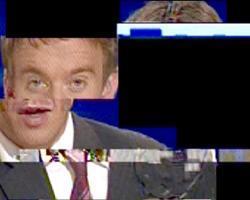

Steven Ball
The War on Television
Experimental video | dv | color | 5:37 | United Kingdom | 2004
The War on Television is made almost entirely from images derived from interference fractured digital television broadcasts. These are randomly processed and manipulated through layers of scratch techniques exaggerating the stuttering fragmentation. The pristine digital veneer, the authority and reliability of the always-on 24 hour news channel becomes abstracted, fucked over in the flow of jarring noise and stammering incoherence. A celebration of digital anti-aesthetics, excess and entropic fallibility.
Steven Ball has worked in film, video, sound and installation since the early 1980s. In the late 1980s he accidently migrated to Melbourne Australia. There he continued his practice making a number of film, video and sound and installation works, as well as being engaged in various arts activist, curatorial, administrative, teaching and writing activities. Since returning to the UK in 2000 he has worked predominantly with digital video, producing a series of works which, among other things, are particularly concerned with digital material processes and spatial representation. He is currently Research Fellow at the AHRB British Artists` Film and Video Study Collection, Central Saint Martins College of Art and Design in London.

Delphine Balley
Charivari
Experimental fiction | hdv | color | 19:54 | France | 2016
Charivari, l’intrusion des sons discordants dans un village, annonce la chasse de la boite noire, l’inversion des codes, la menace funeste qui contrarie l’ordre établi, une rumeur lointaine qui s’approche... Une cavalière venue d’un autre temps gît sur le sol, blessée. Le visage d’un homme apparait battu par le vent, souillé par la terre. La forêt derrière lui est à peine visible. Concentré, il écoute: les bruits d’une chasse ancestrale céleste, des aboiements de chiens, puis soudain... un charivari primitif naît d’une rumeur transportée par le vent. Les chasseurs en poste, guettent cette chasse lointaine, par-delàles forêt qui se déroule au son du cors. Blessée au visage, la cavalière se redresse. Le regard fixe, elle traverse en boitant la forêt plongée dans un désordre de sons. Elle est attendue... L’homme au visage souillé halète, la boîte noire est à terre. Le sang coule de sa plaie. La lame du couteau brille dans la nuit. Du sacrifice naît le rituel, la cavalière porte le masque d’or sur le visage. Dans une maison bourgeoise, Le Charivari atteint son apogée, les murs résonnent d’un rythme funeste et hors d’âge. Des convives vétus de fourrures déambulent dans les couloirs, les visages défilent telle une galerie de portraits. C’est le rendez-vous secret d’un rite ancestrale. Le vent s’est introduit dans la maison. Au loin, des coups de feu résonnent, des chiens aboient, le gibier est de retour, la chasse peut commencer.
Née en 1974 à Romans en France, Delphine Balley vit et travaille à Saint-Jean-en-Royan Delphine Balley est diplômée de l’école Nationale Supèrieure de la Photographie d’Arles en 1999. Ses séries photographiques, faites à la chambre, reconstituent et théatralisent faits divers, scènes familiales, scènes d’avant ou d’après crime, histoires vraies, avec une extrème minutie, un goût prononcé pour le motif et le détail. Ces sayntes, métaphores du quotidien, sont autant de huis clos hors du temps qui mélent savamment réalité et fantastique. La singularité créatrice de l’artiste transporte le spectateur dans un univers insolite, étrange, inquiétant, parfois dérangeant. Delphine Balley entremèle la chronique, le journalisme, le fantastique, la narration, le conte, la sorcellerie, ou encore le cinéma.